UNIT 10
The Emergence of Rhythm and Blues
-
1.Black Social and Economic Issues in the 1950s
-
a.The Civil Rights movement gained momentum, laying the foundation for major advances during the 1960s.
-
b.In general, R&B artists did not add their voices to the movement, but the crossover appeal of their music helped heighten awareness of black culture.
-
c.White audiences embraced the new style, which made people more aware of race relations.
-
2.Rhythm and Blues
-
a.The term “rhythm and blues” was coined by Jerry Wexler, founder of Atlantic Records, to replace the term “race records.” (See Wexler with Aretha Franklin at right.)
-
b.R&B was used to describe several post-World War II black styles, all of which had strong beats and blues influences:
-
1)Jump bands;
-
2)Female singers;
-
3)Electric blues.
-
c.Important rhythmic features:
-
1)Shuffle rhythm (long--short pattern);
-
2)Triplets (dividing the beat into 3 parts);
-
3)Backbeat.
-
d.R&B styles would significantly influence rock and roll.
-
3.Jump Bands
-
a.Influenced by big-band swing, but used fewer instruments: rhythm section with saxophones and a trumpet, plus a lead singer.
-
b.The bass walks; the drummer plays a shuffle rhythm; the guitar and piano also help keep the 4-beat rhythm; the saxophones, trumpet, and voice all honk riffs.
-
c.The tempo is upbeat, but not too fast; light backbeat.
-
d.Blues-based chorus form.
-
e.The singer is prominent, and the lyrics are often humorous.
-
f.Louis Jordan and His Tympany Five was one of the most important and popular jump bands. (See photos at right.)
-
1)“Choo Choo Ch’Boogie” (1946)
-
*Listen to “Choo Choo Ch’Boogie,” and follow the Listening Cue in the text.
-
2)“Caledonia” (1946): another Jordan song with similar features as “Choo Choo Ch’Boogie”
-
-
g.Jump band songs appealed to both black and white audiences and were an important influence on rock and roll.
-
4.Female singers: Ruth Brown (1928-2006)
-
a.Nicknamed “Miss Rhythm,” Brown was the top R & B performer in the early 1950s. (See photo below right.)
-
b.Blues influences: hoarse voice, squeaks and moans; speechlike rhythm at times.
-
c.“Mama, He Treats Your Daughter Mean” (1953)
-
1)Illustrates a different aspect of rhythm from the jump band examples. Here there is a strong backbeat emphasized on tambourine and drums, making syncopation a more important feature. There are also triplets played by the guitar and piano.
-
2)Rough vocals with squeaks (this would influence Little Richard).
-
3)Standard R & B instrumentation: rhythm section, electric guitar, small horn section.
-
*Then click here for a video of Ruth Brown singing the same song.
Electric Blues
-
1.Muddy Waters began using electric guitar in the mid 1940s, so that he could be heard above the noise in the bars where he performed. (It had been used in country music and jazz before that time.)
-
2.Electric blues is an urban style, different from the rural country blues.
-
3.Muddy Waters (1915-1983)--see photo at right
-
a.Born McKinley Morganfield in Mississippi, but moved to Chicago during World War II.
-
b.His sound typifies electric blues:
-
1)Voice, electric guitars, harmonica, piano, bass, and drums;
-
2)Blues form, sometimes modified to include verse and chorus;
-
3)Rough, passionate vocals, clearly derived from country blues style;
-
4)Vocal-like responses from the guitar and harmonica;
-
5)Dense, dark texture with instruments playing in the lower register;
-
6)Layers of melodic lines;
-
7)Rhythm section laying down a strong beat, often shuffle rhythm.
-
c.“(I’m Your) Hoochie Coochie Man” (1954)
-
1)Stop-time opening with 2 riffs, one in the harmonica and the other in the electric guitar. These riffs then punctuate Waters’ vocals in the verse.
-
2)In the chorus, the texture becomes thicker, and all the instruments play.
-
*Listen to “Hoochie Coochie Man,” and follow the Listening Cue in the text.
Early Doo-Wop
-
1.Doo-Wop is a mixture of pop, black gospel, and R&B styles that started to appear in the late 1940s, but which crossed over into the pop market from the mid 1950s until the mid 1960s.
-
2.The groups were mostly male (see The Platters at right), and the songs ranged from slow to up-tempo.
-
3.The first breakthrough hit was “Sh Boom,” which came out in two versions: first, as an R&B version by The Chords and soon after, a cover version by a white group, The Crew Cuts.
-
4.Recording cover versions of R&B songs by white groups, whose versions were usually more successful than black groups, was common. Racial prejudice was rampant, not only in the record industry but also among record consumers.
-
5.“Sh Boom” (1954) illustrates the musical style of early doo-wop as performed by The Chords (see photo at right):
-
a.Sometimes called “jump-band lite,” because the singers are accompanied by a small jump band, and there is shuffle rhythm.
-
b.Focus is on the voices: lead singer plus 4 backup singers (including a bass singer, who is sometimes featured).
-
c.Voices imitate instruments (as in jazz scat singing and in the male gospel quartets).
-
d.Nonsense syllables inject rhythmic energy.
-
e.Call and response between lead and backup singers, and also close harmony.
-
*Listen to The Chords singing “Sh Boom,” and follow the Listening Cue in the text.
Looking Back, Looking Ahead
-
1.1945 to 1954 was a decade of transition between the “modern era” (the 1920s through early 1940s) and the “rock era” to come. It witnessed an unprecedented diversity in musical styles, and even the formerly “outsider” styles, such as blues and country, were now entering the mainstream and would influence rock era music.
-
2.In the second half of the 1950s, “rock and roll” would emerge from rhythm and blues. After 1955, the two styles would diverge both racially and rhythmically, due to the innovations of Little Richard and Chuck Berry.
Photos
-
1.Louis Jordan and His Tympany Five
-
2.Muddy Waters
-
3.The Chords
-
4.Ruth Brown

Rhythm and Blues, 1946-1954
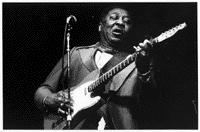
Unit Ten
Rhythm and Blues, 1946-1954
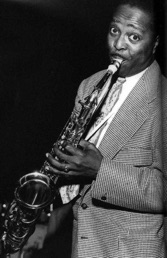
Louis Jordan (1908-1975)
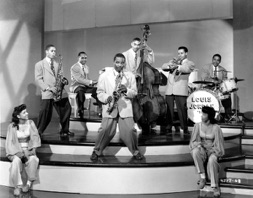
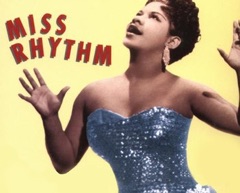
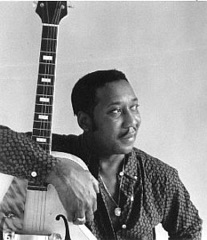
Louis Jordan and His Tympany Five
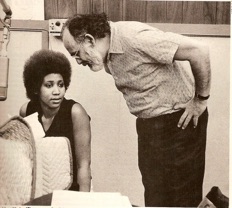
Aretha Franklin and Jerry Wexler in the late 1960s
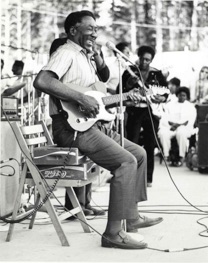
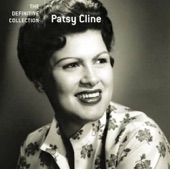

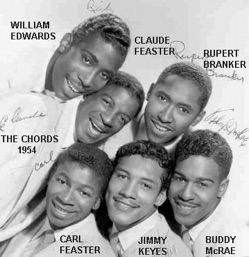
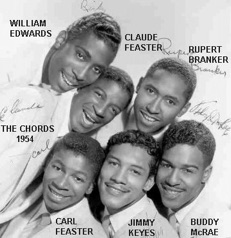


The Platters

The Topeka State Journal announcing the Supreme Court decision in Brown vs. Board of Education
Muddy Waters
